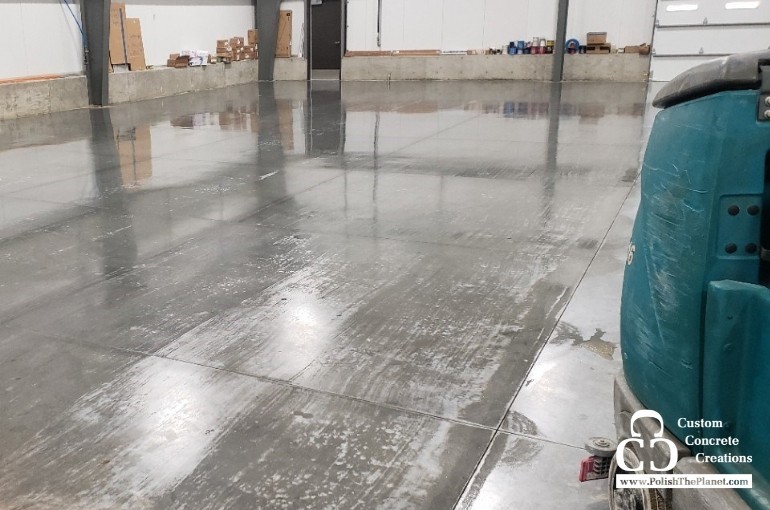
As winter approaches, homeowners and business owners alike face the challenge of preparing their properties to withstand the cold, moisture and harsh conditions that the season brings. Among the critical areas of concern are finished concrete floors, which are susceptible to damage if not adequately protected. Here are 10 essential steps for preparing your concrete floors for winter and ensuring they remain in optimal condition.
1. Complete a thorough cleaning
Before taking any protective measures, it's essential to start with a clean slate. Sweep or vacuum your concrete floors to remove dust, dirt and debris. For more stubborn stains or residues, consider using a mild detergent and a soft brush or mop to ensure the surface is spotless.
2. Seal the surface
Applying a high-quality concrete sealer is a crucial step in protecting your floors from winter's moisture. Sealers create a protective barrier that prevents water, ice and salts from penetrating the concrete. Choose a sealer suitable for your specific needs, such as acrylic, epoxy or penetrating sealers.
3. Repair cracks and damage
Inspect your concrete floors for any cracks or damage that may have developed over time. Cracks can allow moisture to penetrate, leading to further damage during freeze-thaw cycles. Repair any cracks with an appropriate concrete patch or filler, following the manufacturer's instructions.
4. Consider anti-slip coatings
Winter often brings slippery conditions due to ice and snow. To enhance safety on your concrete floors, consider applying anti-slip coatings. These coatings provide added traction, reducing the risk of slips and falls. They can be particularly beneficial in high-traffic areas.
5. Use mats and rugs
Place mats or rugs at entry points to help prevent the tracking of snow, ice and salt into your space. These protective coverings can collect moisture and debris, keeping your concrete floors cleaner and safer.
6. Know snow removal techniques
When snow accumulates outside, it's crucial to use proper snow removal techniques to minimize damage to your concrete. Avoid using metal shovels or sharp tools that could scratch or chip the surface. Opt for plastic or rubber snow shovels, and be gentle when clearing snow to prevent surface abrasions.
7. Read the labels on de-icing products
Be cautious when using de-icing products on your concrete floors. Some chemical de-icers can be harsh and potentially damage the surface. Look for de-icers labeled as safe for concrete or opt for alternative methods like sand or cat litter for traction.
8. Keep up with regular maintenance
Continue to clean your floors as needed each week. Continuously monitor your concrete floors for signs of damage, moisture infiltration or salt buildup. Promptly address any issues to prevent them from worsening.
9. Ensure proper ventilation
Maintaining proper indoor humidity levels is essential during the winter. Dry indoor air can lead to the drying out of concrete surfaces and potentially cause cracks. Use humidifiers to maintain adequate moisture levels indoors.
10. Enlist the help of a professional
For commercial spaces or large properties, it's advisable to schedule a professional inspection of your concrete floors before winter arrives. Experienced contractors can identify vulnerabilities and provide recommendations for winterizing.
We’ve got you and your finished concrete’s back
Protecting your finished concrete floors from the harsh effects of winter is essential for preserving their longevity and appearance. By following these steps and implementing preventive measures, you can ensure that your concrete floors remain in excellent condition, even in the coldest months. Winterizing your concrete floors not only safeguards your investment but also contributes to the safety and functionality of your space during the winter season.
Contact us today with any questions or comments!
